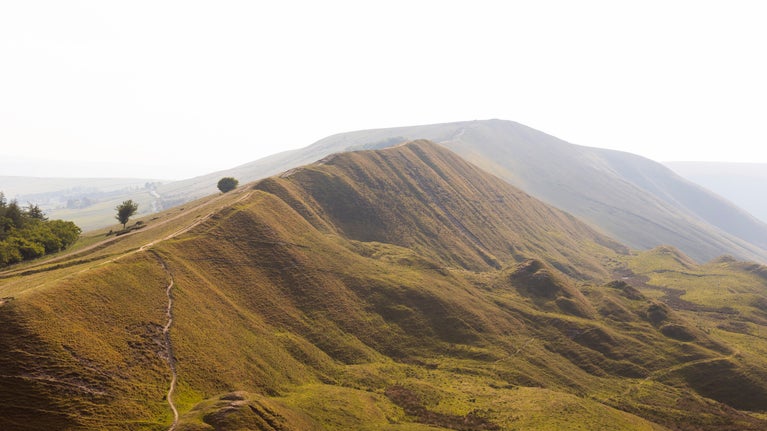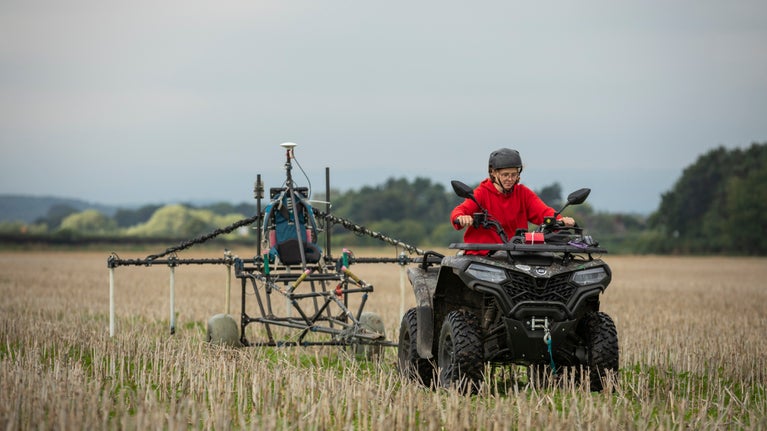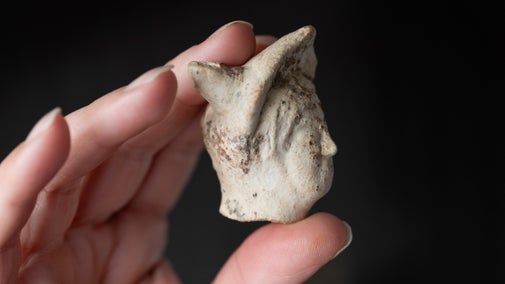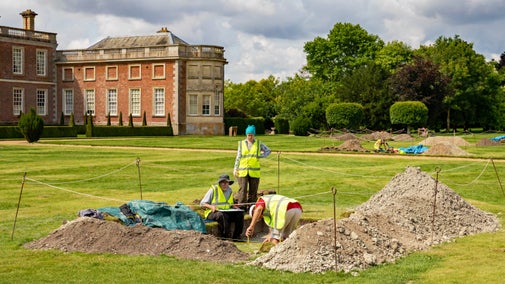
Archaeological work
We look after many rich and diverse archaeological sites. Archaeology helps us to learn more about them and protect them for the future.

Our archaeologists use several methods to uncover the hidden histories of the places we care for, and protect them for future generations. Archaeological evidence is fragile, so we’re careful and use non-intrusive techniques where possible to protect the land while still being able to learn about its past.
Geophysics lets us see underground without digging. We use tools like ground-penetrating radar, magnetometers and resistance meters to scan the soil and create digital maps. These maps show walls, buildings or other features hidden beneath the surface.
At Fountains Abbey in North Yorkshire, a survey revealed the burial ground of medieval monks and the remains of a large tannery which challenges the idea that these religious sites were always peaceful places.
Our biggest survey at Attingham Estate in Shropshire covered overed 1,000 hectares. It uncovered remains of Roman and prehistoric landscapes, including several previously unknown villas.
LiDAR uses laser scanning from aircraft to create detailed 3D maps of the landscape, including areas hidden beneath trees.
In the South Downs, the Changing Chalk project scanned 192 square kilometres of land. It revealed faint signs of ancient settlements, burial grounds, old roads and even World War II defences.
Our archaeologists walk across recently ploughed fields to collect pieces of pottery, flint or other artefacts that have been brought to the surface.
At Wimpole Estate, the Cambridge Archaeological Field Group and volunteers have carried out large-scale field walks. This work helped us learn more about Wimpole’s long history and gave many people their first hands-on experience of archaeology.
Archaeologists use a range of scientific techniques to better understand the past. For example, radiocarbon dating measures how much carbon is left in burnt wood or bone, which helps them work out how old the remains are.
They use tree-ring dating (dendrochronology) to find out when trees were cut to build new objects or structures, and optically stimulated luminescense (OSL) to date buried underground features by figuring out when the soil was last exposed to sunlight.
Also, by carrying out chemical analysis on materials like preserved food and plants, and by using isotope analysis on bones, they can learn what people ate, how they lived and where they may have come from.
At the Cerne Abbas Giant in Dorset, archaeologists used new dating techniques to learn that the famous hillside figure was most likely made in the late Saxon period. This project was jointly funded by the National Trust, the University of Gloucestershire, Allen Environmental Archaeology and the Pratt Bequest.
Old maps and documents are a key part of archaeological investigations. They show how places have changed over time and help us decide where and what to investigate.
As part of our Blossom campign, we studied historic maps of orchards. When we compared them to modern ones using digital tools, we found that 80% of traditional orchards had been lost in 100 years. This research is now helping shape how we replant orchards in the future.
Excavation is often the last step in archaeological research. Because digging disturbs the ground, we only excavate when there’s a clear reason and we record everything carefully.
At Columbjohn, part of the Killerton Estate in Devon, the University of Exeter worked with us to uncover a lost Elizabethan manor. In three weeks, we discovered the layout of the house, including a sunken garden and cobbled courtyard.
All the discoveries and research across the places we look after are recorded in our online database. It’s a free resource that lets anyone explore what our archaeologists have found – whether you’re an expert researcher or a curious visitor looking to learn more about the history beneath the ground.

We look after many rich and diverse archaeological sites. Archaeology helps us to learn more about them and protect them for the future.
Artefacts found at the places we care for can help us understand what life was like in the past. Learn about five of our most intriguing finds and what they reveal.

Our archaeologists uncover hidden stories and care for thousands of sites and objects. Learn how their work helps protect the past for future generations.

From hillforts to stone circles, gold mines and medieval castles, there's plenty to explore at the historic places in our care. Discover reminders of the past that tell the stories of our ancestors.
